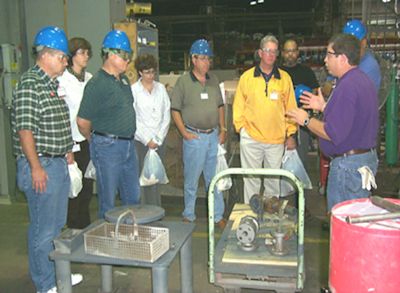Workplace Resources
Sources Within the Workplace
There are many resources available to you if you want to find out more information about a safety or health issue in your workplace.

Some sources are:
- Employer or supervisor, co-workers and union representatives - OSHA encourages workers and employers to work together to reduce hazards. If possible, you should first discuss safety and health problems with your employer. You can also talk over your concerns with other workers or your union representatives (if there is a union).
- Safety Data Sheet (SDS) for information on chemicals - If you are working with a chemical, the SDS can give you important information about its hazards and the precautions and personal protective equipment needed to work safely with it.
- Labels and warning signs - Labels and signs can show hazard information to workers and can be useful in providing additional information and making you aware of a potential safety or health hazard. However, signs are not intended to take the place of actual hazard correction. For example, a "Danger" sign on an unguarded piece of machinery does not meet OSHA requirements because the hazard is still present.
- Employee orientation manuals or other training materials - Orientation manuals and training materials about your job should include information about how to work safely. All manuals and training materials should be written clearly and spell out what you need to know about your job hazards. They can also serve as a resource if you have questions or concerns at a later date.
- Work tasks and procedures instruction - A written job or task instruction can provide information about the proper and safe way to perform a job. OSHA considers some jobs and tasks very hazardous, such as locking out machinery, and requires employers to have written procedures.
Knowledge Check Choose the best answer for the question.
6-1. A "Danger" sign on an unguarded piece of machinery is not intended to take the place of actual hazard correction because _____.
You forgot to answer the question!
